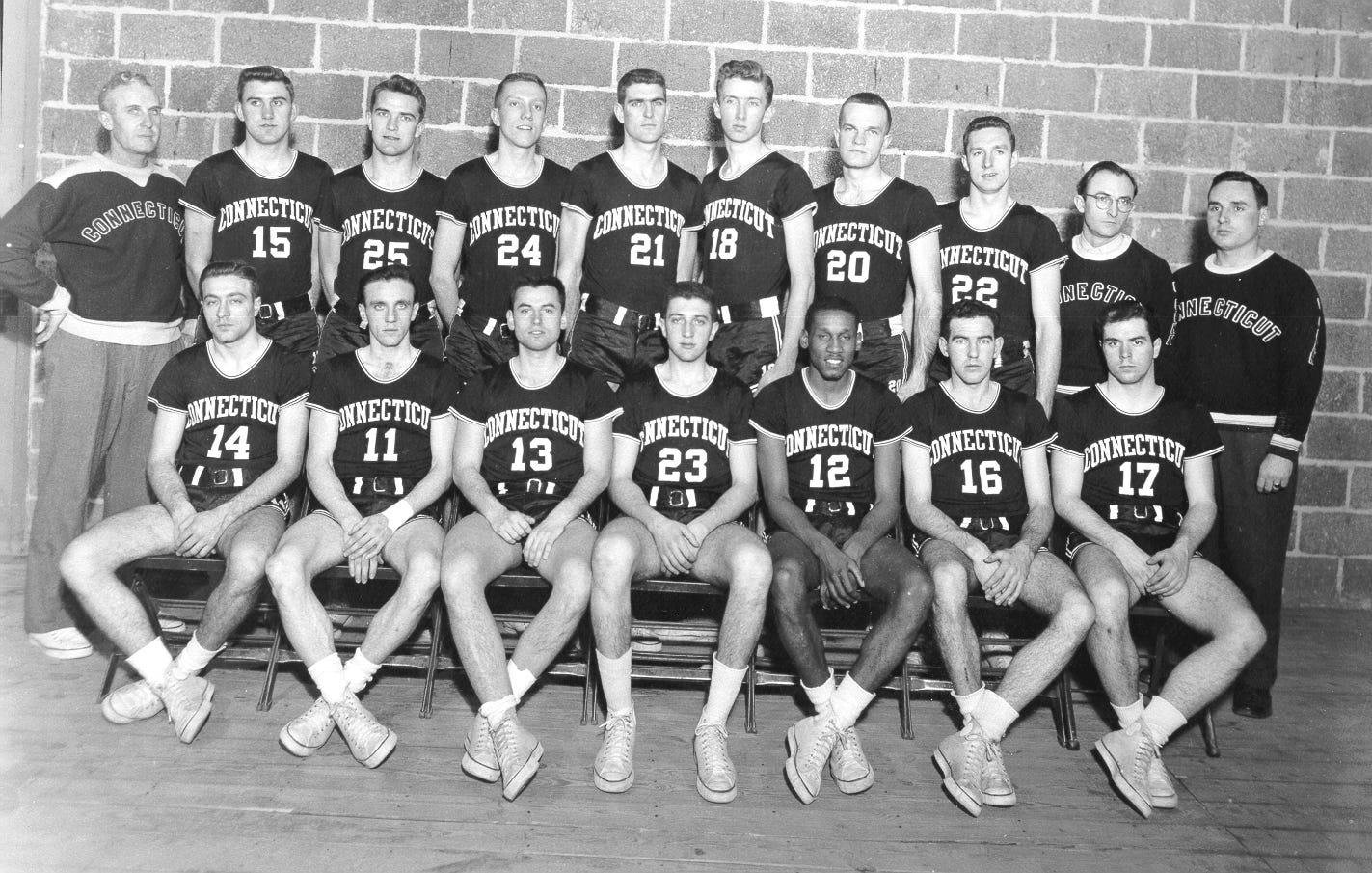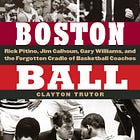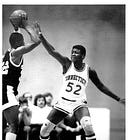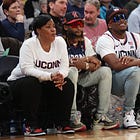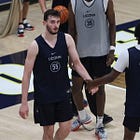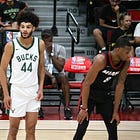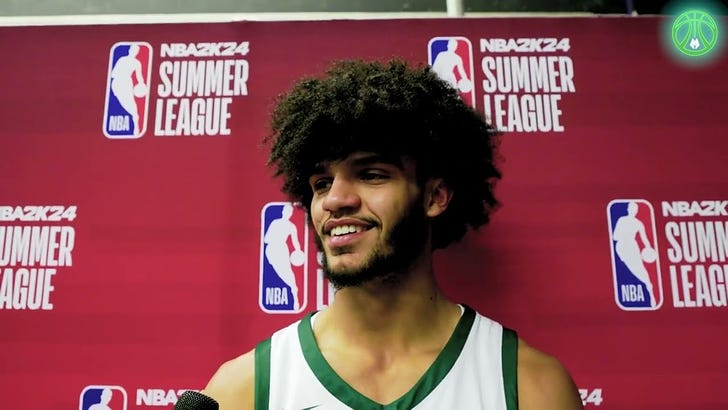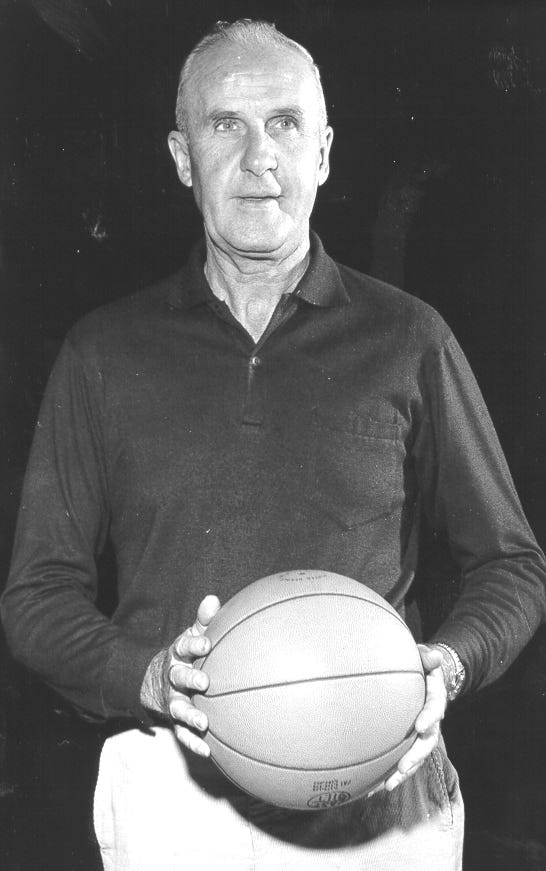The 1951 UConn team was Hugh Greer's breakthrough squad
Led by one of the most legendary figures in UConn athletics history, the 1951 Huskies made the program's first NCAA Tournament.
“They hawk, they holler, they hustle,” read a common description of the Connecticut men’s basketball team during the winter of 1950-1951. Hugh Greer’s Huskies came to be known as the “3-H’s” that season, the first time that a UConn team reached the NCAA Men’s Basketball Tournament.
The nickname referred to both the club’s on-court attributes (hawking, hollering, and hustling), a nod to their scrappy, physical, and tenacious style of play. It was also a gentle rib, a reference to the school’s history as an agricultural college, the domain of such organizations as the “4-H” club.
To borrow a favorite phrase of Coach Calhoun’s, the idea that this UConn team “just rolled in on the farm truck” was an odd one. Virtually all of its players hailed from either New York City’s immediate environs or Connecticut’s industrial core. At the same time, it was an understandable one. The 1950-1951 season was the fiftieth year of University of Connecticut basketball. UConn had yet to reach either the NCAAs (which began in 1939) or the NIT (which began in 1938 and was, at the time, widely regarded in the Northeast as the more prestigious tournament).
It wasn’t for a lack of success. “The Aggies,” as the institution’s teams were known during the Connecticut Agricultural College [CAC] era (1899-1933), had a series of strong teams during the 1920s under head coaches Sumner Dole and Louis Alexander. Don White’s teams posted nine consecutive winning seasons during the 1930s and 1940s, paralleling the school’s transition first to Connecticut State College (1933-1939) and, later, to the University of Connecticut.
Despite its consistent success in the Yankee Conference, Connecticut had, in fact, just rolled in on the farm truck in the minds of the big city sharps and big conference mandarins who ran the NIT and NCAAs respectively. Considering the sinister context that soon surrounded the 1951 tournament, “the UConns,” as some 1950s scribes called them, seemed roughly as far out of their element as Donny in that frequently quoted scene in The Big Lebowski.
Plus, it was awfully hard to make the tournament in those days. The NCAAs had an eight-team field until 1951. Initially, the NITs invited six teams before expanding to eight and eventually 12 in 1949. UConn was a charter member (1923) of the Yankee Conference, a league whose membership consisted of the six flagship New England state universities by the early 1950s. When the NCAAs expanded to 16 teams for the 1951 tournament, ten major conference champions earned automatic bids. Tournament organizers earmarked a non-Ivy League “New England bid” in the Eastern Region but it was not guaranteed. The Ivies had a guaranteed bid of their own.
Greer’s Background
The man who shepherded the Huskies to their first tournament birth remains one of the most revered names in Connecticut history. Hugh Scott Greer was entering his fourth full season as head basketball coach in 1950-1951. He took over early in the 1946-1947 campaign after head coach Blair Gullion resigned to become the athletic director at Washington University in St. Louis. At the time, Greer coached the UConn freshman, having joined the Huskies staff after turning Ellsworth High in South Windsor into a Class C prep basketball power. Ellsworth won five state titles and more than 90 percent of its games during Greer’s tenure. At one point, his team boasted a 67-game winning streak.
Greer was a Connecticut man through and through. He grew up in Suffield and attended CAC. He captained the 1925-1926 basketball team to a Yankee Conference title, its second in a row and second in school history.
By all accounts, Greer was kind and soft-spoken. “Hughie” took a defense-first approach to basketball and excelled at teaching the game’s fundamentals. Flexibility was his hallmark as a tactician. His teams were so thoroughly schooled in defensive fundamentals that they could switch from zone to man-to-man without losing their grasp on the opposition.
Greer was apparently the first college coach in New England history to try the full-court press, though it was not a regular feature of UConn’s defensive scheme in the early 1950s. During his 17 years as head coach, Greer earned universal esteem within the state’s basketball coaching fraternity, spending countless hours each summer working with high school coaches at his marathon on-campus coaching clinics.
Away from the court, Greer kept a boat at Groton Long Point. He entertained friends, family, former players, and opposing coaches on his boat, often taking them on extensive fishing excursions. He teed up regularly at the Norwich Golf Club, where he also played tennis. Virtually all of his players went fishing, golfing, or played tennis with him during the off-season. Every one of them came over at least occasionally to his home on the UConn campus for supper.
At the time of the coach’s death in 1963, Hartford Courant sports editor Bill Lee wrote of the “permanent gift” that Greer had given so many of his players. “Most of these young men,” he wrote, “have lost the best friend they had outside their families.”
The striking depth of Greer’s relationships with his players manifested itself on the court. UConn’s strength was typically in its depth. Greer went ten-deep on his bench in the 1950-1951 season. Twelve players appeared in at least half of UConn’s games. Such depth was a rarity in early 1950s college basketball. Sportswriters often spoke of “Iron” basketball teams in the era—clubs that played exclusively their starting five.
UConn’s defensive intensity didn’t allow for such “Iron” basketball. Nor did the Huskies walk the ball up the court like so many teams in the age of Truman.
The ‘51 Huskies
Several players stand out on the Connecticut roster. The most noteworthy is Vincent “Vin” Yokabaskas, who was one of the original inductees into the “Huskies of Honor” in February 2007. Also known as “Yogi,” the 6’2 junior forward from Bloomfield averaged 15.5 points in 1950-1951, leading the team in scoring for the second of three consecutive years. He earned All-Yankee Conference honors in all three of his varsity seasons. As a sophomore, he broke the school’s single-season scoring record, held by the legendary Walt Dropo.
“Yogi” was fouled constantly. Often, he drove powerfully into the lane, forcing the opposition into bad fouls. He ranks in the top ten in free throw attempts in UConn history despite only playing three years of varsity basketball.
After college, he raised a family in Simsbury, where he continued to play in local leagues. Yokabaskas was a rabid UConn basketball fan for his entire adult life and held season tickets into his 80s. “Yogi” died in 2014 and remains one of the most revered players in school history.
As important to the Huskies’ attack was their point guard. Standing just 5’8, Norwich’s Ed Gates was Greer’s coach on the floor and the heartbeat of Huskies basketball that winter. Opponents throughout the Northeast respected Gates’ abilities as a playmaker and a hardscrabble defender.
Hailing from Astoria, Queens, Bill Ebel was UConn’s “big man,” standing 6’4. The junior averaged nearly 11 points and 9 rebounds per game, leading the team in boards. Ebel transferred in from The New York Institute of Applied Agriculture on Long Island, now known as SUNY-Farmingdale.
Fellow Queens native Wallace “Wally” Widholm excelled on both ends of the floor, averaging 7.6 points and 5.7 rebounds per contest. He later played professional baseball in the Boston and Milwaukee Braves organizations. Athletic 6’0 senior forward Bill Clark, who grew up in Norwich like Gates, made significant contributions on both ends of the floor as well.
The seniors on the team had watched the upperclassmen win Yankee Conference titles during their freshman and sophomore years. As juniors, they had finished one game behind Rhode Island for the league title. In their final collegiate season, they more than lived up to expectations.
These 3-Hs impressed out of the gate, ripping off five consecutive wins to start the season before falling in Troy, New York to Rensselaer Polytechnic Institute (RPI), 72-67. The loss to an unheralded RPI team may have been a bit of a hangover. Two nights earlier, UConn outlasted Yale, earning its first victory over the Bulldogs in five seasons. Students took to the Hawley Armory court to celebrate after the 71-65 win.
The season consisted of a series of long winning streaks. When they lost, they lost close. The Huskies’ three regular-season defeats came by a total of 12 points. At times, the 1950-1951 UConn season seemed like one of the lighthearted sitcoms that would become a television staple by the decade’s end.
Two days before Christmas, UConn upset Boston College, 56-52. At halftime, Greer surprised his players with early Christmas presents. UConn led by four at the half and played BC to a draw in the second half. The record remains silent on whether the gifts were a help or a hindrance to the Huskies’ cause.
After beating Maine, Jack Moran of the Bangor Daily News complimented Greer and his team on their gentlemanly conduct. “Hugh Greer and his talented University of Connecticut squad proved to the satisfaction of all concerned that it is possible to play basketball without officiating the game as well.”
Apparently, neither Greer nor his players questioned one call all evening or demonstrated dismay with any decision by the officiating crew.
UConn averaged nearly 4,000 spectators a night that season at Hawley Armory. Not bad on a campus of just over 5,000 students. In total, more than 45,000 people came to Hawley to watch UConn play basketball that winter. Just 17,000 total fans came out to Connecticut’s five home football games in the fall.
UConn ran way ahead of the pack in the Yankee Conference all season, clinching the league title before Valentine’s Day. The Huskies won their 22nd game in the regular season finale against UMass, a 95-50 blowout. The February 28th victory established a new UConn single-season record for wins.
On March 1st, four members of the Huskies made the 1950-1951 Yankee Conference Honor Roll. Yokabaskas earned first-team honors while Gates, Ebel, and Widholm placed on the second team. Now all the Huskies could do was sit around and wait to see if they would have a post-season.
A Scandalous Era of College Hoops
Traditionally, the NCAA Tournament earmarked a spot for a New England team but it was not guaranteed in the way that the Big Ten, for example, had an automatic bid. In 1951, Connecticut and Holy Cross vied for that New England slot.
Buster Sheary’s Crusaders had earned New England’s bid in three of the four previous tournaments, reached two Final Fours, and won the national title in 1947. In 1950-1951, Holy Cross posted a 20-5 record, playing a schedule that included several nationally ranked teams. Despite facing no nationally ranked opponents, UConn appeared to have the inside track to the tournament bid, having posted 22 wins. There were discussions among NCAA Tournament officials in early March of Holy Cross and UConn meeting for a play-in game but nothing came of it. The committee picked UConn, granting them their first tournament bid in school history.
In the midst of UConn’s record-breaking campaign, all hell broke loose in major college basketball.
On February 18, 1951, New York City police detectives arrested three City College of New York (CCNY) basketball players at Penn Station upon their return from a game in Philadelphia. Ed Warner, Ed Roman, and Al Roth were charged with bribery.
All three had starred on the previous year’s CCNY team, the only club in history to win both the NIT and NCAA men’s basketball tournaments in the same season. Dozens of arrests followed over the next few weeks. In all, 32 players from seven schools (CCNY, New York University, Manhattan, Long Island University, Bradley, Toledo, and Kentucky) admitted to altering the scores of 86 games played between 1947 and 1950 in exchange for money. Kentucky was the only one of these schools to earn a bid to the 1951 NCAA Tournament, which they in fact won.
While Kentucky bounced back after a one-year ban from competition in 1952-1953, most of the other programs never regained their luster. For CCNY and NYU, big-time college basketball came to an end entirely.
“The Point-Shaving Scandal,” as it came to be known, was arguably the biggest scandal in American sports since members of the Chicago White Sox baseball team helped fix the 1919 World Series. For years, college basketball remained in disrepute with wide sections of the American public, who regarded it as controlled by organized crime. Subsequent point-shaving episodes in the 1950s and 1960s did nothing to dispel this perception.
Storrs isn’t all that far from New York City and Greer had recruited several NYC-area players to join his Huskies. But there is no indication that the public perceived UConn’s 3-H team as in any way related to the scandal dominating the headlines. In the minds of the basketball cognoscenti, these were still the Aggies of old and not a city team like those other northeastern teams facing allegations.
The team UConn played in the first round of the NCAA Tournament was much closer to the epicenter of the scandal.
Connecticut would face latter-day conference rival St. John’s in the first round of the NCAA Tournament, playing on the Johnnies’ frequent home floor, Madison Square Garden. Neither team was seeded, as the NCAA didn’t adopt that practice until 1979. Beyond home-court advantage, St. John’s was the clear favorite. The ninth-ranked Johnnies were the only ranked club Connecticut played all season. Moreover, UConn had a 20-day layoff before the game while St. John’s had played three times in mid-March, reaching the quarterfinals of the NIT, also played at Madison Square Garden.
St. John’s University was then located in Brooklyn. It began its gradual move to Queens in 1954. The Johnnies were not implicated in the 1951 point-shaving scandal, yet the ill omens suddenly surrounding New York City college basketball helped convince Frank McGuire to leave Queens for the University of North Carolina job in 1952. The largest part of McGuire’s decision, though, related to the health of his son, Frank, Jr., who was born with cerebral palsy. The University of North Carolina was known nationally for its cutting-edge cerebral palsy treatments and facilities. Five years later, in 1957, McGuire won a national championship with a roster filled with players he recruited from New York City and its environs.
The First Tourney
UConn’s legion of fans followed them to New York. The 2,000 tickets initially assigned to UConn sold out in an hour. Another 1,000 tickets were soon sent to Storrs and gobbled up by students and local supporters. The Student Senate organized a chartered train to bring undergraduates into the city. More than 2,200 fans who couldn’t make it signed a telegram to Greer that read “Good Luck, Coach.” Despite the large UConn contingent, the 18,000-plus crowd at the Garden was a rabidly pro-St. John’s assemblage. Booming applause greeted every Johnnies basket.
St. John’s, playing in front of its hometown crowd, was undeniable that evening. The Johnnies were bigger, stronger, and faster. Their towering forwards Ray Dombrowsky (6’5) and Zeke Zawoluk (6’6) dominated in the low post, combining for 39 points.
A physically overwhelming St John’s team also took its time finding good shots, playing at their own pace in the pre-shot clock era. On several occasions, the Redmen passed the ball around for more than a minute before seriously pursuing points. UConn fell behind 8-2 early, displaying what sportswriters at the time called “Garden jitters.”
UConn’s top scorer was off his game in the first half as well. Frank Mulzoff pestered “Yogi” throughout the first 20 minutes, holding him to just five points. The Huskies never led.
“Little Connecticut took pains to take care of 6’6 Zawoluk but soon fell behind 20-9,” the New York Daily News’ Dana Mozley wrote. At times, UConn triple-teamed Zawoluk, opening up other guys to do damage on the scoreboard.
The team then known as the Redmen led 34-19 after 20 minutes and expanded their lead to 27 just six minutes into the second half. Yokabaskas almost single-handedly made the final respectable, scoring 17 of his game-high 22 points in the second half. Ebel kicked in 12 but this game was never close.
Final Score: St. John’s 63 Connecticut 52.
Two nights later, eventual national champion Kentucky blew out St. John’s to win the Eastern Regional Final. Leading the attack for the Wildcats that evening was 7’0 junior center Bill Spivey, who posted a 12-point, 11-rebound double-double. Spivey would go on to be named Most Outstanding Player of the Final Four.
Later that year, Spivey was implicated in the point-shaving scandal. He was barred from playing his final year of college basketball at Kentucky and banned for life from the NBA. He was charged with perjury and later acquitted, loudly proclaiming his innocence in a scandal that put a huge dent in the reputation of Wildcats basketball.
The loss to St. John’s did nothing to stop UConn basketball’s upward trajectory. The 1950-1951 club proved to be the first of many Hugh Greer-coached teams to reach the NCAA Tournament. On seven occasions, he led the Huskies to the NCAAs but won just one tournament game, a 1956 first-round triumph over Manhattan.
Greer died ten games into the 1962-1963 season, which concluded with an eighth tournament appearance during his tenure. Interim coach George Wigton guided UConn to the school’s 17th Yankee Conference title, which, at the time, earned them an automatic bid. Greer’s lifetime record was 287-112. His Huskies won 12 Yankee Conference titles and never finished worse than second place.
Greer died unexpectedly at his home on the UConn campus in January 1963. Tributes poured in from near and far, attesting not only to his greatness as a basketball coach but uncommon decency as a man. He had been arguably the most popular man in the state of Connecticut for much of the past two decades.
In death, the University honored Greer in numerous ways. Most significantly, the University of Connecticut Field House, which opened in 1954, took on his name. To this day, the Hillside Road complex remains the Hugh S. Greer Fieldhouse, which served as home to the men’s and women’s basketball programs until the opening of Gampel Pavilion.
Greer was one of the original inductees into the Huskies of Honor in 2007. In a more intangible sense, Greer and his teams set the standard for all of UConn athletics. They proved year in and year-out that teams representing a small New England state can win on the biggest stages in American college athletics.
Clayton Trutor teaches history at Norwich University in Vermont. He is a freelance writer and the author of Loserville: How Professional Sports Remade Atlanta — and How Atlanta Remade Professional Sports (2022) and Boston Ball: Jim Calhoun, Rick Pitino, Gary Williams, and College Basketball's Forgotten Cradle of Coaches (2023). He’d love to hear from you on Twitter: @ClaytonTrutor

